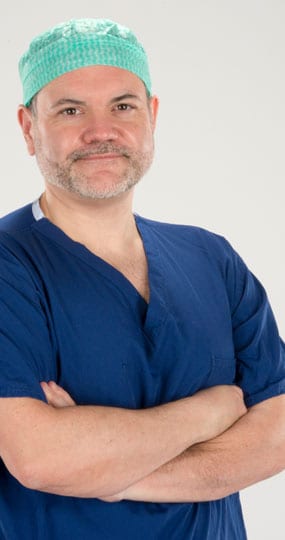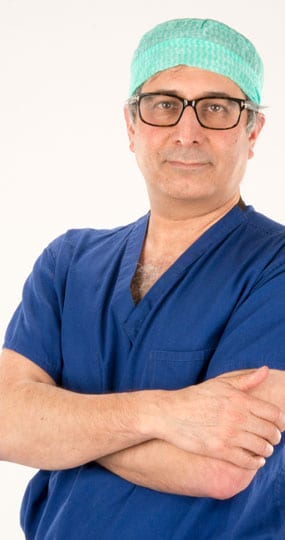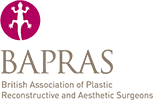Procedure — skin
Curettage
Curettage can be an effective method to use when removing a skin lesion. This type of procedure is often used to address: warts, skin tags, seborrheic keratosis, actinic keratosis and pyogenic granuloma. These types of lesions often hang off the surface of the skin and benefit from curettage as they are softer than the skin that surrounds it.
The affected person can often feel that these types of irregularities can be unpleasant to look at, and may also be located where jewellery or clothing can catch on it. This can cause some bleeding or irritation, which can be uncomfortable.

Curettage can be an effective method to use when removing a skin lesion. This type of procedure is often used to address: warts, skin tags, seborrheic keratosis, actinic keratosis and pyogenic granuloma. These types of lesions often hang off the surface of the skin and benefit from curettage as they are softer than the skin that surrounds it.
The affected person can often feel that these types of irregularities can be unpleasant to look at, and may also be located where jewellery or clothing can catch on it. This can cause some bleeding or irritation, which can be uncomfortable.
At a Glance
Duration
15 - 45 minutes
Type Of Anaesthetic
Local anaesthetic
Return To Work (job dependent)
Next day
Day Case / Overnight
Day case
Bra / Garment To Be Worn For
Not necessary
Return To Gym
Next day
In-depth Procedure Information
The Consultation
Before the right solution can be recommended, an examination of your particular lump or bump will be required. If it is diagnosed that your skin irregularity is: a wart, skin tag, seborrheic keratosis, actinic keratosis or pyogenic granuloma then curettage may be the right treatment option for you. You will be advised on how the procedure will be carried out, along with any aftercare instructions and potential risks.
Reshape & Restore can produce a successful outcome, that often leaves behind very minimal scarring – something which our past patients can often verify.
The Procedure
Curettage is a simple procedure that is often over before you know it. The technique used is known as electrosurgery that works by scraping the lesion off the skin’s surface as heat is also applied – which is why this procedure can be referred to as curettage and cautery. The area of concern will need to have a local anaesthetic administered so it can be numbed, before the curette is used. This instrument is similar in appearance to a tiny spoon, but it has sharp edges that will remove the lesion when a scooping action is applied.
A hot wire or electrosurgical unit (diathermy) is used to cauterise the wound, which will help to destroy any remaining cells and stop any bleeding. The extracted lesion may then be sent away for analysis, which is done as a matter of protocol, to ensure it does not contain any cancerous cells.
Aftercare & Results
The treated area will feel tender, once the anaesthetic has worn off. This can be managed through taking painkillers or paracetamol and is not often prolonged. You may have a dressing applied to the treated area and before you leave the hospital, you will be given advice on how best to care for your wound. Some scarring may be left behind, depending on the size of the area that has been treated, but it should not be bigger than the lesion itself. This will eventually fade to blend in more with your natural skin tone.
The wound may take 2 – 3 weeks to heal fully. The outcome will see the area looking and feeling flatter, smoother and more evenly toned.
FAQ's
Curettage may be recommended when your unwanted lesion is softer in texture than the skin that surrounds it. You may be suitable if the appearance of the skin lesion is affecting you both physically and aesthetically. A protruding lump can cause embarrassment if located in a particularly noticeable place to others; impacting self-confidence and self-esteem.
When a lesion is prone to snagging on clothing or jewellery it can be uncomfortable and irritating.
This quick and simple procedure is considered to be a safe and effective method of removing certain types of skin lesions or irregularities. The procedure will be performed by a trained and qualified doctor or practitioner, who will carefully consider which method will be the most successful option.
A pressure dressing may be required for the first 24 – 48 hours. During this time you will need to keep the area dry. You may be able to return to work within a couple of days, depending on the location of the treated area, for which your surgeon can give you individual advice. Although the area will feel a little tender for a while, if you experience prolonged pain, heat or swelling, it could indicate an infection. You would need to contact the team at Reshape & Restore and a course of antibiotics will help to clear this up.
You will be given all the information and advice you need at the consultation session. This is the best way to prepare for surgery, as you will have the opportunity to ask questions and express any concerns, before the procedure is due to take place. Only when you are absolutely sure that you are happy to go ahead will an appointment be made.


Prices From
£550
Our treatments are not off the peg but tailor made, bespoke treatments that vary from person to person. The above prices act as a guide in the standard or average case. The actual cost of your treatment may be less or more and will be confirmed after your consultation.
Enquire Today









